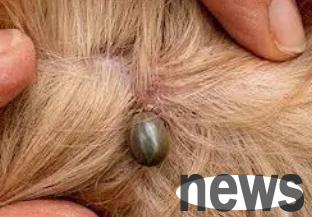In pet life, ear mites are a common small parasite. They live in the pet's ear canal and cause various discomfort symptoms. Because ear mites cause symptoms similar to many other ear canal diseases, misdiagnosis is not uncommon, which may lead to a wrong direction of treatment, which may delay the condition.
1. Symptoms caused by ear mites
When a hairy child is invaded by ear mites, its symptoms usually include itchy, redness, and inflammation in the ears. These symptoms are caused by ear mites moving in the ear canal, irritating the skin of the ear canal and triggering an inflammatory response. Hairy children may frequently scratch their ears or shake their heads in an attempt to relieve discomfort. In severe cases, the skin around the ears may also be red and swollen, or even rashes or other skin reactions.

2. The infection route of ear mites
The transmission method of ear mites is mainly through direct physical contact. When a pet infected with ear mites comes into contact with other pets, such as sniffing or fighting each other, the ear mites may be transferred from one pet to another. Therefore, if one of the pets in a family is found to have ear mites, it is very likely that the other pets have been infected.
3. Diagnosis
For the diagnosis of ear mites, doctors usually first observe the inside of the hairy child's ears to see if there is brown or black dirt. These dirts are formed by mixing ear mites and their excrement. If the symptoms are obvious, the doctor may be able to make a diagnosis directly through observation. However, to ensure accuracy, doctors usually check these dirt under a microscope to detect and confirm the presence of ear mites.
4. Treatment
For hairy children, the treatment of ear mites will be determined based on factors such as their age, the severity of the infection, whether there is a secondary infection, whether there is a living space with other pets, and whether there is infection in other parts. Treatment usually involves the use of topical and oral medications.

Topical drugs: used to remove ear mites and dirt from the ear canal. These drugs are often insecticidal and can effectively kill ear mites and remove their excrement.
Oral medication: used to treat secondary infections and relieve systemic symptoms. Certain oral medications can help reduce inflammation and itching and make hairy children more comfortable.
In addition, if the hairy child's ears are infected with other fungi or other parasites at the same time, corresponding treatment is also required. Doctors may prescribe multiple medications and guide the owner on how to use them correctly to ensure optimal treatment results.
V. Prevention
Since ear mites are mainly transmitted through physical contact, effective preventive measures are relatively limited. Especially for young pets, they are more susceptible to infection because their immune system is not yet fully developed. Regularly checking your pet's ears is key to preventing ear mites. Once any signs of infection are found, treatment should be done immediately to prevent the infection from spreading to other pets or family members.

Although ear mites may cause discomfort and trouble to hairy children, this infection can usually be effectively controlled and eliminated as long as the diagnosis is promptly and the correct treatment measures are taken. In order to ensure the health and happiness of the hairy child, the owner should check the pet's ears regularly and pay attention to contact with other pets. At the same time, understanding and following doctors’ advice is the key to successful treatment. For families with multiple pets, ensuring that each pet is properly examined and treated is an important measure to prevent the spread of ear mites. Through these prevention and treatment methods, we can help hairy children stay away from the troubles of ear mites and enjoy a healthy and happy life.